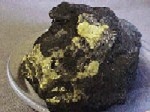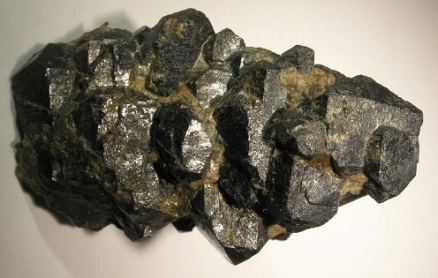Actinium (Environmental & Earth Science)
| Previous Element: Radium Next Element: Thorium |
| |
| Physical Properties | ||
|---|---|---|
| Color | silvery-white | |
| Phase at Room Temp. | solid | |
| Density (g/cm3) | 10.7g/cm3 | |
| Hardness (Mohs) | --- | |
|
Melting Point (K) |
1323.2 | |
|
Boiling Point (K) |
2743 | |
| Heat of Fusion (kJ/mol) | 14.2 | |
| Heat of Vaporization (kJ/mol) | 293 | |
| Heat of Atomization (kJ/mol) | 385 | |
| Thermal Conductivity (J/m sec K) | --- | |
| Electrical Conductivity (1/mohm cm) | --- | |
| Source | Synthetic (U-235 decay) | |
| Atomic Properties | ||
| Electron Configuration | [Rn]7s26d1 | |
|
Number of Isotopes |
35 (0 natural) | |
| Electron Affinity (kJ/mol) | --- | |
| First Ionization Energy (kJ/mol) | 499 | |
| Second Ionization Energy (kJ/mol) | 1170 | |
| Third Ionization Energy (kJ/mol) | --- | |
| Electronegativity | 1.1 | |
| Polarizability (Å3) | 32.1 | |
| Atomic Weight | 227.03 | |
| Atomic Volume (cm3/mol) | --- | |
| Ionic Radius2- (pm) | --- | |
| Ionic Radius1- (pm) | --- | |
| Atomic Radius (pm) | --- | |
| Ionic Radius1+ (pm) | --- | |
| Ionic Radius2+ (pm) | --- | |
| Ionic Radius3+ (pm) | 126 | |
| Common Oxidation Numbers | +3 | |
| Other Oxid. Numbers | --- | |
| Abundance | ||
| In Earth's Crust (mg/kg) | 5.5x10-10 | |
| In Earth's Ocean (mg/L) | --- | |
| In Human Body (%) | --- | |
| Regulatory / Health | ||
| CAS Number | 7440-34-8 | |
| OSHA Permissible Exposure Limit | No limits | |
| OSHA PEL Vacated 1989 | No limits | |
|
NIOSH Recommended Exposure Limit |
No limits | |
|
Sources: |
||
Actinium is a radioactive, metallic element designated by the symbol Ac. It has a soft texture and is silvery-white in appearance.
Actinium gets its name from the Greek word "aktis" or "aktinos" which means ray or beam.
Actinium is a rare earth element within the Actinides series, which includes all elements from actinium (atomic number 89) to lawrencium (atomic number 103).

Actinium was independently discovered by French chemist André-Louis Debierne in 1899 and subsequently by Friedrich Otto Giesel in 1902. Debierne, who was not only a friend of Marie Curie and Pierre Curie, but also worked with them, discovered actinium while working with uranium oxide or uraninite, which is a major uranium ore.
Occurrence
Trace amounts of actinium are naturally found in very low concentrations in uranium ores as 227-Ac, its most stable and abundant isotope. It can also be synthetically produced by neutron irradiation of radon in a nuclear reactor.
Isotopes
27 radioisotopes have been identified. The three with the longest half-lives are:
- 227-Ac with a half life of 21.773 years, emitting both alpha and beta rays.
- 225-Ac with a half life of 10 days, and
- 226-Ac with a half life of 29.37 hours.
The remaining isotopes have much shorter half-lives ranging from less than 10 hours to less than a minute.
Electron shell configuration
| 1s2 | |||||||
| 2s2 | 2p6 | ||||||
| 3s2 | 3p6 | 3d10 | |||||
| 4s2 | 4p6 | 4d10 | 4f14 | ||||
| 5s2 | 5p6 | 5d10 | |||||
| 6s2 | 6p6 | 6d1 | |||||
| 7s2 |
Applications
Currently actinium has it has no commercial or industrial applications. However, because it is extremely radioactive (150 times more radioactive than radium), it is used to produce neutrons.
Further reading
Actinium - Element Properties and Periodic Table Information
